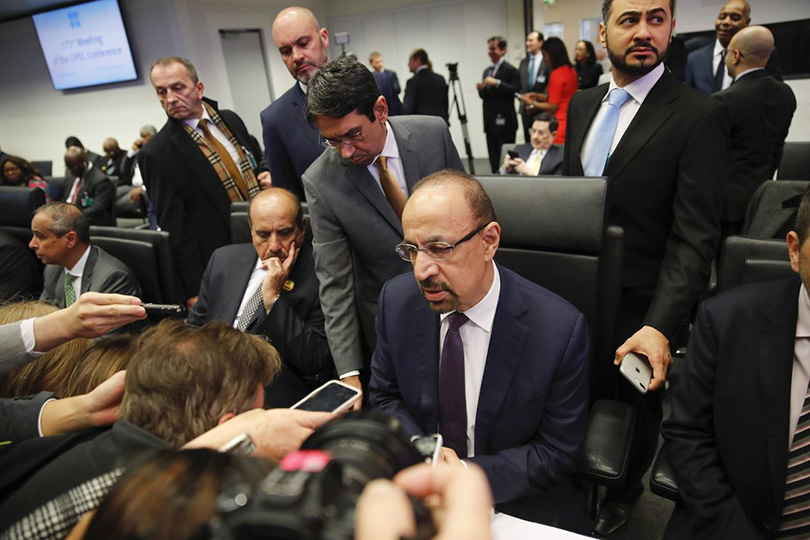“Well done, OPEC!” is a phrase that probably offends many, especially those with memories of the 1970s and 1980s when the oil cartel seemed often to be squeezing the West so that Arab sheikhs could party in style. Thirty years on, having further shocked the West’s virus-weakened economies by dumping low-priced oil, OPEC perhaps has acted responsibly by agreeing to move toward market stability.
Low-priced oil is good for most of us, although less so when we are stuck at home rather than driving to work or going out to have fun at weekends. But it is not so good when it is so low that it undermines the U.S. oil industry and, in particular, American shale oil production, which has made us effectively energy independent in recent years.
The deal, agreed by a teleconference on Sunday after four days of negotiations, is essentially between Russia and Saudi Arabia, which will end the oil price war they started a month ago. One of their targets had been our shale oil production, which they saw as freeloading off their efforts in OPEC+ (the Saudi-led OPEC cartel plus Russia and several other non-OPEC exporters) to maintain prices in a falling market.
American shale oil output has slipped in the past few weeks anyway because the coronavirus has impacted demand, but the key element in the agreement appears to have been President Trump. Rather than the cameo role I predicted a week ago, he was the male lead. He appears to have knocked together the heads of Russian President Vladimir Putin and Saudi Crown Prince Mohammad bin Salman, aka MbS, although officials are not briefing such an apparently undiplomatic version of events. He certainly achieved a fudged compromise on Mexico’s otherwise intransigent position.
The big question is, how long will the agreement last? It supposedly doesn’t start until May 1, when OPEC+ will reduce production by almost 10 million barrels per day, about 10 percent of world demand. On paper, the U.S., Canada and Brazil contribute to this total. But these cutbacks last only until the end of June, when they will be reduced until the end of December. The agreement then calls for a further easing in the cuts, which supposedly will last until April 2022.
Skeptical? You should be. Initial trading in oil at the start of the business week showed only minor increases in price. That powerful force — “the market” — appears to doubt whether the agreement will work. It could well be right. The world is awash with oil. Storage tanks have been filling. Unsold tanker loads are either at anchor or steaming in circles waiting for a customer. Meanwhile, the economic downturn caused by the virus shows no sign of lifting anytime soon. The hope that plentiful supplies of oil, at still relatively cheap prices, will speed recovery when we turn a corner on the virus is, for the moment, still a dream.
In the meantime, we may be facing another round of the oil crisis. Once again, it could be personality-driven. An interesting role this last time was that of Saudi King Salman, who reportedly discussed the issue with President Putin and also joined in a key telephone discussion with President Trump and the Russian leader. The 84-year-old monarch is not normally so active. It could be that his favorite son, MbS, whose irritation with Russia prompted the oil price war, did not want a public role because it may have implied Putin had got the better of him. The official Saudi Press Agency said MbS had his own telephone conversation with Trump.
The King Salman/MbS dynamic fascinates policymakers, perhaps more so now because they are physically separate. The king reportedly is on an island in the Red Sea off the city of Jeddah, without at least one of his closest royal advisers who has succumbed to the virus. MbS is several hundred miles north in the futuristic city of Neom, closeted with his own advisers who are trying to cut budgets to cope with the decline in oil revenues.
The drama likely is not over. We have to prepare ourselves for the next act.







Comments